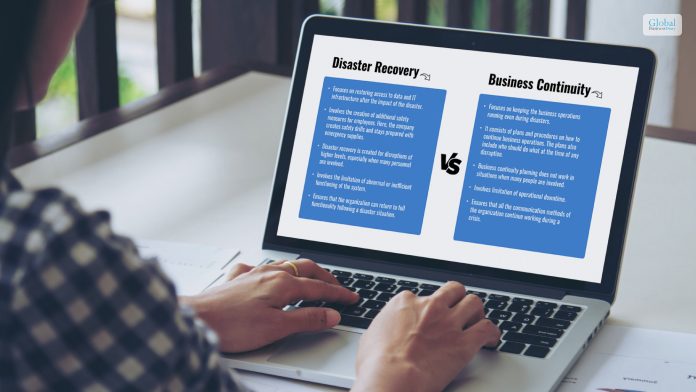LLC VS Sole Proprietorship: Major Differences That You Need To Know

LLC Vs Sole Proprietorship: What is right for you? –
Whether you are starting a new business or an online store, you will need to choose the right legal structure for your business based on your choice and needs. Both LLCs and sole proprietorships are quite common. The business model you choose might have a big impact on how you run your company, especially as seen from the tax, legal, and management perspectives.
In this article, you will learn about two major types of business structures – LLC and Sole Proprietorship. We will first discuss each of these business structures individually in brief. Finally, we will share the major differences between the two in regard to structure, function, role of the owner(s), etc. Hence, to learn more about these two types of business structures, read on through to the end of the article.
What Is An LLC?

According to Investopedia,
“A limited liability company (LLC) is a business structure in the U.S. that protects its owners from personal responsibility for its debts or liabilities. Limited liability companies are hybrid entities that combine the characteristics of a corporation with those of a partnership or sole proprietorship.”
The LLC is basically a corporate structure where the owners of the organization protect their place from the liabilities of the company. Here, the company is a different entity from that of the owner. In case of debts, liabilities, and lawsuits, the structure of the organization protects the owners by making them limitedly liable.
However, what the regulation of the LLC is depends on the state in the US where your business is located. Apart from banks and insurance companies, any individual or entity can be a member of an LLC. Whatever profits LLCs make, they do not pay taxes directly on the profits. The profits and losses of the LLC are passed through to members of the organization, that report on their individual tax returns.
Read More: Micro vs Macro Economics: What’s The Difference?
What Is A Sole Proprietorship?

According to the Forbes Advisor,
“A sole proprietorship is an unincorporated business that’s owned by the individual running it. A sole proprietorship is the default choice for anyone who runs a business but hasn’t set up another formal business structure like an LLC. As a sole proprietor, there’s no separation between your personal and business assets and expenses. You are personally responsible for all your business’s debts and obligations.”
This is the simplest form of business. It is basically an unincorporated business with only one owner. Apart from that, this business is also the least expensive to form. A business, by default, is a sole proprietorship if an individual operates the business on his own.
For example, if you are an individual shopkeeper, freelancer, retailer, or online business owner, you automatically become a sole proprietor of the business. In this case, you will not need to adopt a business structure from the first. Furthermore, if the name of the business is the same as the name of the owner, then the business is typically a sole proprietorship.
However, any sole proprietorship can also operate under a trade name or a brand name. The best thing about a sole proprietorship is that the business and the business owner are not legally separate. Hence, if the business incurs debts, the owner of the business is personally responsible for making the payments for the debt.
LLC Vs Sole Proprietorship: What Are The Differences?

The major difference is rightly noted by Wall Street Mojo –
“LLC is a separate legal entity run by its members having limited liability, and it is mandatory for an LLC to get registered, whereas sole proprietorship is a sort of business arm of an individual which is not separate from its owner; hence its liabilities are not limited, and there is no need to register sole proprietor.”
The following are the major differences between LLCs and sole proprietorships:
| Limited Liability Company | Sole Proprietorship |
|---|---|
| The company has more than one owner. | A single owner of the business runs a single unit. |
| The business and the members are separate entities in an LLC structure. | The business and the owner are not separate in a sole proprietorship. |
| The members of the business need to register as per state regulations if they want to form an LLC. | The owner of a sole proprietorship needs to ensure that the business name is not the same as another business in the state. |
| It costs around $100 to $800 to form an LLC. | There are no costs to form a sole proprietorship. |
| The taxation method is single. A single applicable rate is charged to the members. | The taxes of the sole proprietorship are charged from the income of the sole owner. The owner’s taxes and the business taxes are the same here. |
| The members of the LLC are liable only as far as their investments and shares in the business. | The owner of a sole proprietorship is fully responsible for the entire business. Furthermore, the owner also does not get liability protection. |
| There is little paperwork to be done. | There is no paperwork involved. |
The best option for you, if you are starting out as a business owner, is to go with a sole proprietorship. If you want to grow a bit more, then changing the structure of your business to an LLC will be a better option.
Read More: Vertical vs Horizontal Integration: What Are The Key Differences?
Final Thoughts
LLC vs Sole proprietorship – Hope you have understood the differences between these two types of business structures. If you are starting out as a business owner, consultant, or freelancer, then sole proprietorship is the easiest and simplest option for you. The paperwork that is required is very minimal, and there are no big costs associated.
However, if the business grows bigger and you need legal protection for yourself and your personal assets, LLC is the option to go for. In case of bankruptcy or a legal lawsuit against the business, you do not get involved. Furthermore, there is tax flexibility too. What do you think is the better option of the two? Share your opinions with us in the comments section below.
Discover More Business Insights Below!













